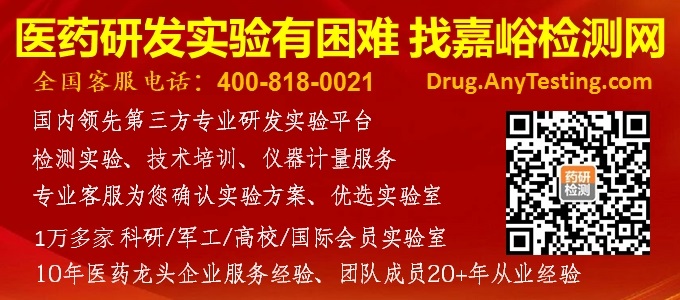嘉峪检测网 2025-09-16 21:33
导读:近日,EDQM发布了《欧洲药典》第 3.2.9 章 “注射剂、粉针和冻干粉针用橡胶塞”的新草案。新文件修订了部分内容。
近日,EDQM发布了《欧洲药典》第 3.2.9 章 “注射剂、粉针和冻干粉针用橡胶塞”的新草案。新文件修订了以下内容:
Reducing Substances: For better clarity, the volumetric solution (0.01 M sodium thiosulfate) used to calculate the difference between the volumes used in the two titrations is now mentioned
还原性物质:为更清晰起见,现在提及了用于计算两次滴定所用体积差值的滴定液(0.01 M 硫代硫酸钠)。
|
Reducing substances. Carry out the test within 4 h of preparation of solution S. To 20.0 mL of solution S add 1 mL of dilute sulfuric acid R and 20.0 mL of 0.002 M potassium permanganate. Boil for 3 min. Cool. Add 6 mL of potassium iodide solution R and titrate immediately with 0.01 M sodium thiosulfate, using 0.25 mL of starch solution R as indicator. Carry out a titration using 20.0 mL of the blank solution (see solution S). The difference between the titration volumes V of 0.01 M sodium thiosulfate is not greater than 0.3 mL for type I closures or 7.0 mL for type II closures. 还原性物质。在溶液 S 制备后 4 小时内进行试验。取 20.0 mL 溶液 S,加 1 mL 稀硫酸 R 和 20.0 mL 0.002 M 高锰酸钾溶液,煮沸 3 分钟。冷却后,加 6 mL 碘化钾溶液 R,立即用 0.01 M 硫代硫酸钠滴定,用 0.25 mL 淀粉溶液 R 作指示剂。用 20.0 mL 空白溶液(见溶液 S)进行滴定。0.01 M 硫代硫酸钠的滴定体积V的差值,对于 I 型瓶塞不大于 0.3 mL,对于 II 型瓶塞不大于 7.0 mL。 |
Extractable Zinc: The analytical procedure has been modified to clarify that acidification of the sample solution is always required to ensure accurate determination of zinc by AAS.
可提取锌:分析程序已修改,以明确说明:为确保通过原子吸收光谱法(AAS)准确测定锌,样品溶液的酸化始终是必需的。
|
Extractable zinc: maximum 5 μg of extractable Zn per millilitre of solution S. 可提取锌:每毫升溶液 S 中可提取锌的最大值为 5 μg。
Atomic absorption spectrometry (2.2.23, Method I). 原子吸收光谱法(2.2.23,方法 I)。
Test solution. Use an appropriate volume of solution S and add 1 per cent V/V of a 103 g/L solution of hydrochloric acid R. The solution S if results are outside the calibration range, dilute 10.0 mL of solution S to an appropriate volume with 0.1 M hydrochloric acid. 试验溶液。使用适量体积的溶液 S,加入 1% V/V的 103 g/L 盐酸溶液 R。若溶液 S 的结果超出校准范围,取 10.0 mL 溶液 S,用 0.1 M 盐酸稀释至适当体积。
Reference solutions. Prepare the reference solutions using zinc standard solution (10 ppm Zn) R, diluting with a 103 g/L solution of hydrochloric acid R or 0.1 M hydrochloric acid. 对照溶液。用锌标准溶液(10 ppm Zn)R,用 103 g/L 盐酸溶液 R 或 0.1 M 盐酸稀释,制备对照溶液。
Source: zinc hollow-cathode lamp. 光源:锌空心阴极灯。
Wavelength 213.9 nm. 波长 213.9 nm。
Atomisation device: air–acetylene flame. 原子化装置:空气 - 乙炔火焰。
|
Fragmentation: The term ‘rubber’ has been replaced with ‘closure’ to clarify the requirements also apply for coated and bi-layer closures.
穿刺落屑:“橡胶” 一词已被 “塞子” 取代,以明确此要求也适用于覆膜和双层塞子。
|
Fragmentation. For closures intended to be pierced by a hypodermic needle, carry out the test as follows: fill 12 clean vials with a volume of water R corresponding to the nominal volume minus 4 mL, close the vials with the closures to be examined and secure with a cap. Using a needle fitted to a clean syringe, inject 1 mL of water R into a vial and remove 1 mL of air; carry out this operation 4 times for each closure, changing the piercing site each time. Use a new needle for each rubber and check that the needle is not blunted during the test. Filter the liquid in the vials through a membrane filter (nominal pore size 0.5 μm). Count the fragments of rubber in the closure visible to the naked eye. Not more than 5 fragments are visible. This limit is based on the assumption that fragments with a diameter of not less than 50 μm are visible to the naked eye; in case of doubt or dispute, examine the fragments under a microscope to verify their nature and size. 穿刺落屑:对于拟用皮下注射针头穿刺的瓶塞,按以下方式测试:将 12 个洁净小瓶装入体积为 “标称体积减 4 mL” 的水R,用待检测瓶塞塞住小瓶并用瓶盖固定;使用安装在洁净注射器上的针头,向小瓶中注入 1 mL 水 R 并排出 1 mL 空气,对每个瓶塞进行 4 次该操作(每次更换穿刺部位);每个橡胶瓶塞使用新针头,并检查针头在测试中未变钝;将小瓶中的液体通过薄膜(标称孔径 0.5 μm)过滤,计数瓶塞中肉眼可见的橡胶碎屑,肉眼可见的碎屑不得超过 5 个。该标准基于 “直径不小于 50 μm 的碎片肉眼可见” 的假设;如有疑问或争议,在显微镜下检查碎屑以确认其性质和大小。 |

来源:Internet